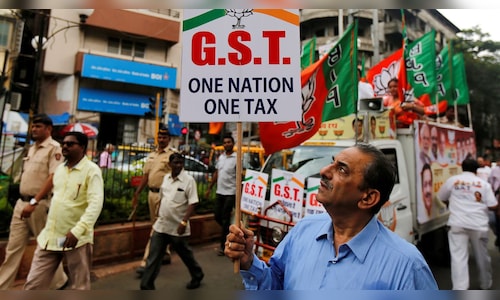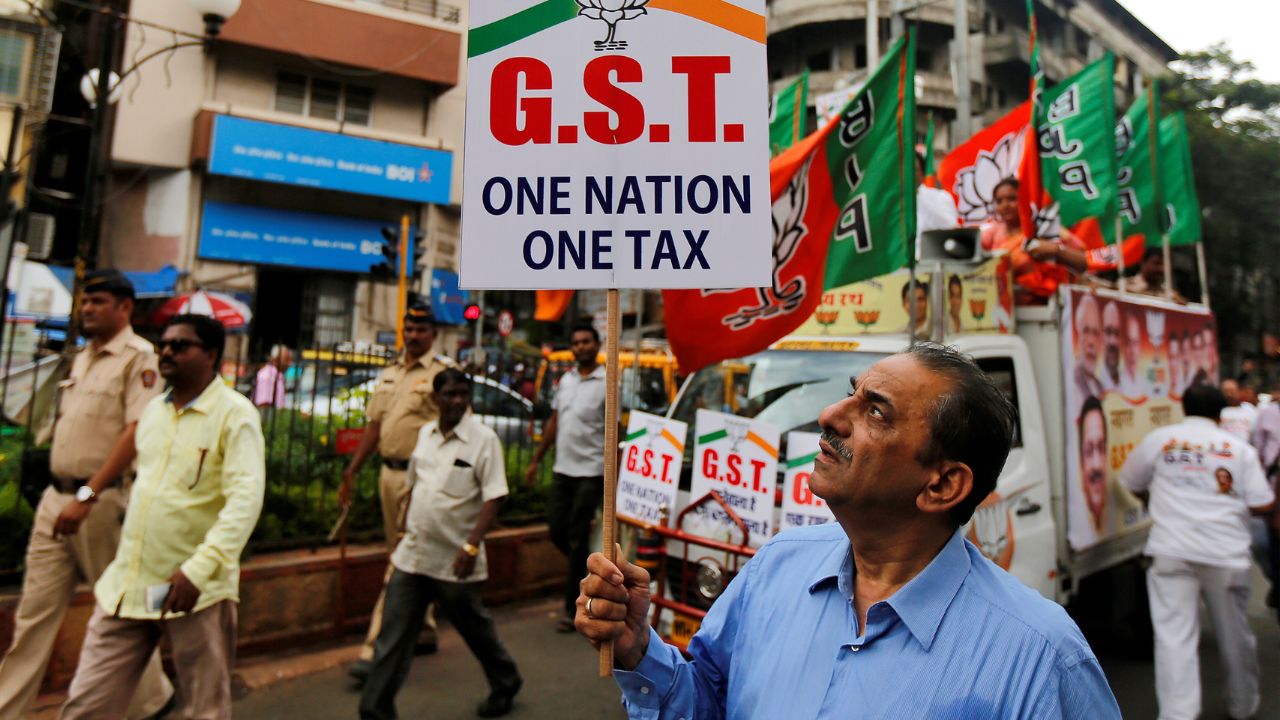

The Allegations
Why are both the poor and the rich paying the same amount of tax? This raises the question of whether the tax system is fundamentally flawed; Why are there multiple tax rates? For instance, the now-infamous example of the popcorn tax was mentioned; The argument being made is that there should be a single, flat tax rate.
An old Oxfam report from January 2023 (without attribution) was cited to suggest that 3% of the total taxes collected from specific food and non-food items comes from the bottom 50% of earners. This, the report claims, highlights the tax’s regressive nature and its negative impact on the poor.
It was suggested that the contribution of indirect taxes is more than direct taxes while it ought to the other way around; that this has happened because of the 2019 reduction in corporate tax. The evasion under GST has also been substantial with cases of evasion of up to ₹2 lakh crore having been detected.
The allegations suggest that states have no say in the GST Council, which is controlled by the Centre, and that they are losing revenue due to GST. Additionally, the Cess component has increased dramatically over the years, with the revenue not being shared with the states. The demand is for a new, simplified ‘GST 2.0,’ with a single, low tax rate.
The Defence
GST has subsumed the various indirect taxes which were prevailing pre-2017 — viz Central Excise, Service Tax, VAT all of which were similar and having multiple rates. GST seeks to address the infirmities of the old tax system where the input tax credit chain was being broken, where tax arbitrage was available between States resulting in large scale evasion and bottlenecks across State borders. In effect creating one nation, one rate of tax across the nation for the same commodity.
Indirect taxes are regressive — they apply equally across the various income strata. It is not possible to impose an indirect tax based on the incomes of the purchasers. Undoubtedly the First Discussion Paper had recommended a two-rate structure with a special rate for precious metals and a list of exempted items — in effect four rates.
GST has travelled beyond that and does suffers from the malaise of different slabs — 0, 5, 12, 18, 28 percents being the popularly known slabs; there is also a 3% and 0.25% and different rates for composition taxpayers depending on their turnover. But there is a method in this apparent taxation insanity.
The rates in GST have been determined seeking to balance both equity and the need for raising revenue and after detailed discussions and acceptance by all members of the GST council. Commodities of mass consumption are in the lower range with rates increasing as we go up the value chain.
It may be mentioned that the power of taxation on alcohol beverages is with the States. None of the States who are votaries of a common rate follow this principle in respect of alcohol beverages of which they are the masters -thus there are different rates for IMFL premium brands and the others as also for beer. A single rate is the ideal- we should await the recommendations of a GoM constituted for this purpose and comprising of representatives across States in this regard.
However it must not be forgotten in all this rhetoric that a single rate (if at all) would be in the range of 15-16 percent. GST is a tax on value addition — every stage of the value addition is thus taxed with credit of tax available for the taxes paid at the earlier stages of the value chain. This would mean exemptions are kept at a minimum so that the there is no break in the value chain. It is doubtful if these challenges are appreciated.
The much debated Oxfam Report was primarily with reference to inequality and direct taxes; indirect taxes have been referred to selectively. The reference is based on old data on the estimated expenditure on certain food items and non-food items. The food items Oxfam has looked at are pulses, milk, cereals, edible oil, meat, dry fruits, beverages, and packaged processed food. Of these, GST rates on pulses is nil when sold loose and 5 per cent — the lowest slab —when packaged.
GST on edible oils is also 5%. Milk, cereals (when not provided free by the government), and meat are all exempt from GST. According to the report, of the total GST collected from these food and non-food items, 64.3% is collected from the bottom 50% income group and 3-4% from the top 10% income group. Thus, the percentage is not with respect to the total GST revenue but GST from only some selected items. Undoubtedly as a percentage of total income the poor will spend a lot more on basic necessities.
As per the budget documents of 2024-25, 36% of the revenue comes from income tax (19%) and corporate tax (17%)-as against 27% from indirect taxes (excise duty 5%+GST 18% + 4% customs). At the Union Government level FY 24 has seen direct taxes contributing more than indirect taxes. This is only bound to increase with the growing emphasis on increasing the tax coverage of direct tax. However, if the union and the state governments tax collections were to be combined direct taxes account for lesser-this is but a natural consequence of the fact that the States do not have powers of imposing income tax.
The GST council is a classic example of cooperative federalism where the Centre and States are represented. All decisions taken thus far over 55 council meetings has been only by consensus. Neither the Centre and or the States can veto the other. Constitutional protections are available .
The Constitution stipulates that every decision of the Goods and Services Tax Council shall be taken at a meeting, by a majority of not less than three-fourths of the weighted votes of the members present and voting- with the vote of the Central Government having a weightage of one- third of the total votes cast, and the votes of all the State Governments taken together having a weightage of two-thirds of the total votes cast.
The bogey that imposition of GST has resulted in loss of revenue to the States is misplaced and not supported by facts. As per the RBI report on State Finances for 2024-25 every State has done well .The GSDP in 2023-24 ( at current prices ) being higher by as much as a high of 141 percent in certain States to a minimum of 58 percent over the GSDP as it stood in 2016-17 just before GST came into being.
Further every State has been compensated at a completely unjustified 14 percent over the base of 2015-16 revenue for a period of 5 years — which has been extended and is set to expire in 2026.This has lulled the States into greater dependency- and lessened the focus on avenues which are open to them to raise revenues.
There is no doubt that the Centre has resorted to increasing use of cess. The Fifteenth Finance Commission has commented adversely on this development observing that the underlying spirit of cess was to serve a specific purpose — which meant it had to be imposed for a specific period till the requirement is met. This has not happened — the Receipts Budget for 2024-25 continues to show huge amounts being collected as cesses of a large variety— health, education, export, crude oil, bidi, sugar, environment, infrastructure, agriculture infrastructure & development.
This money so collected is not shared with the States. This is a matter of concern. Undoubtedly there has been large scale evasion as evidenced by the detections — but technology, data analytics, and focused enforcement have plugged many a gap.
Conclusion
It is unfair to blame all the ills of the country on GST. Ultimately revenue is a reflection of the state of the economy. The last quarter has seen GDP growth at 5.4% — sluggish when compared to the 8.1% in the corresponding quarter of the previous year. There are multiple reasons for this — none of them related to GST.
The contours of the proposed “GST 2.0 version” are not known. The Election Manifesto of the party concerned is very sketchy in this regard. The debate would be more vigorous if “GST 2.0 version” is put in the public domain. In the meantime the focus of all parties should be on ensuring that the Government indeed spends the money for the purpose for which it is being collected and delivers the civic services which the citizen deserves.
— The author, Najib Shah, is former Chairman, Central Board of Indirect Taxes & Customs. The views expressed are personal.
Read his previous articles here



